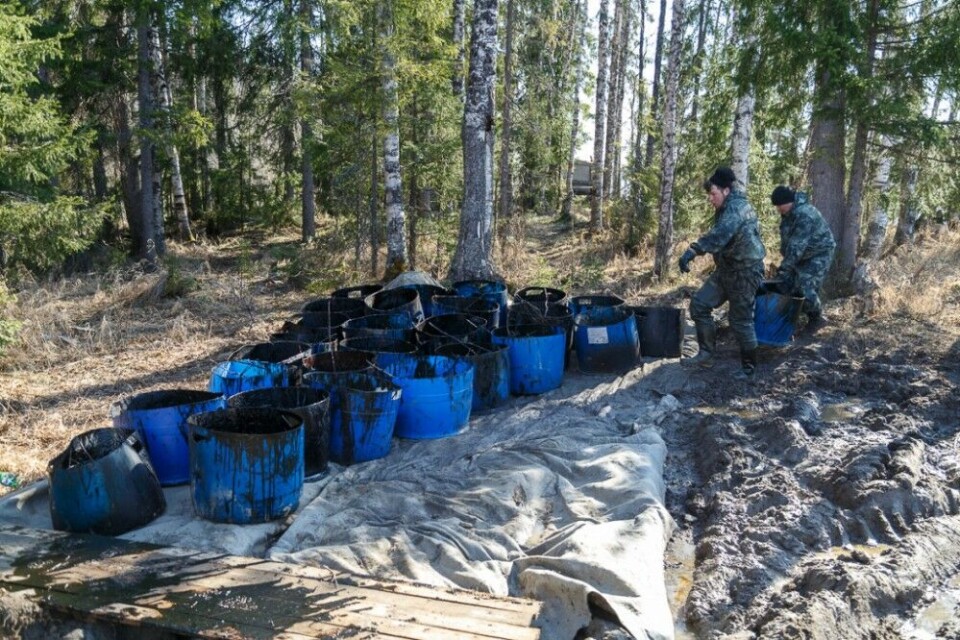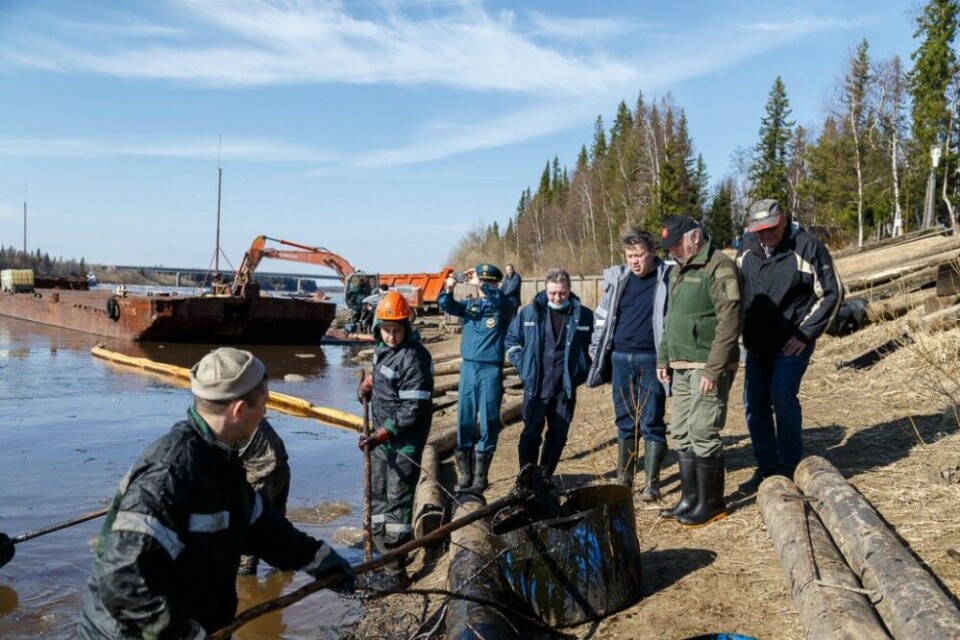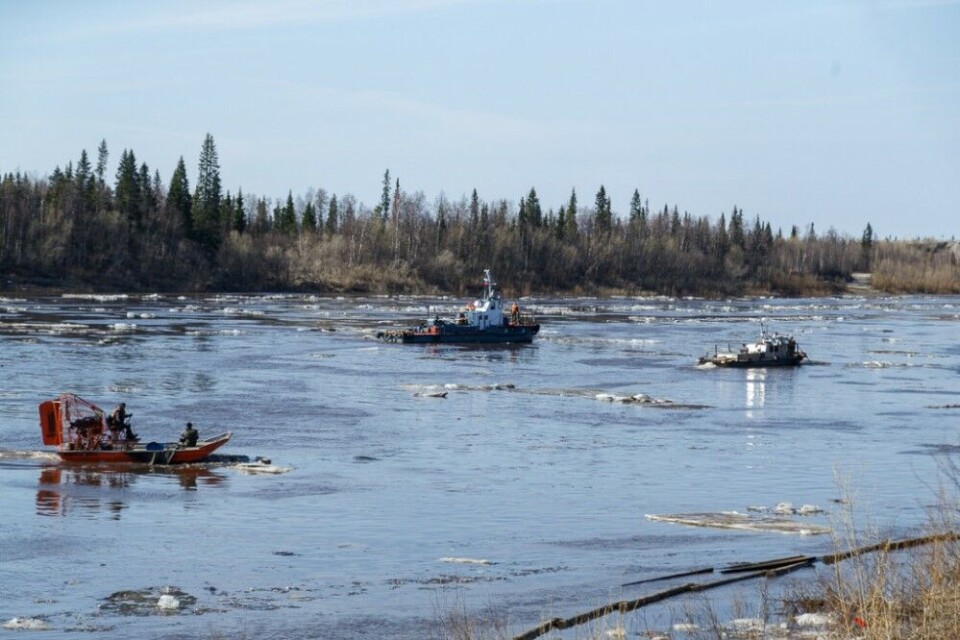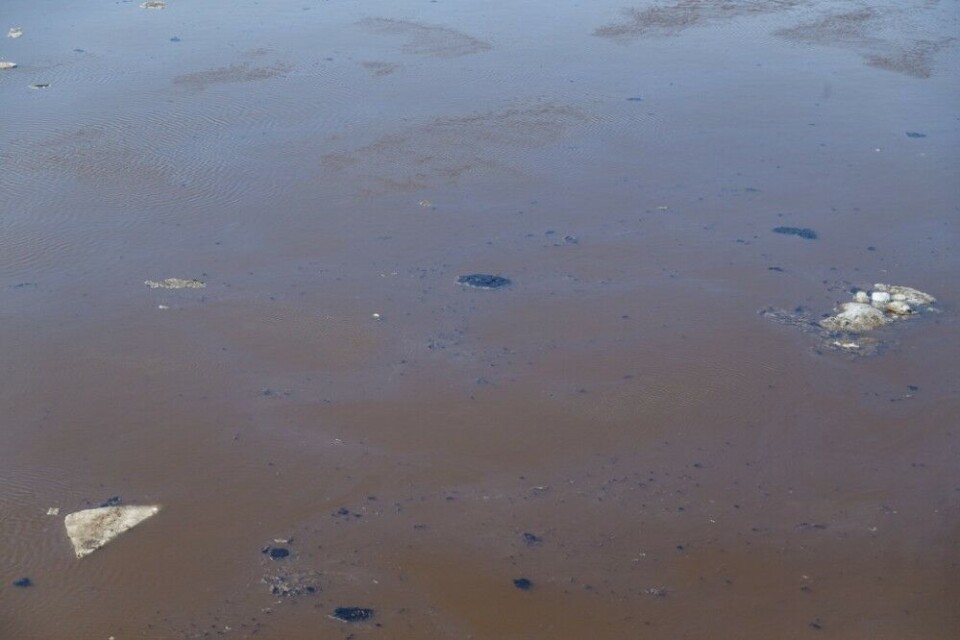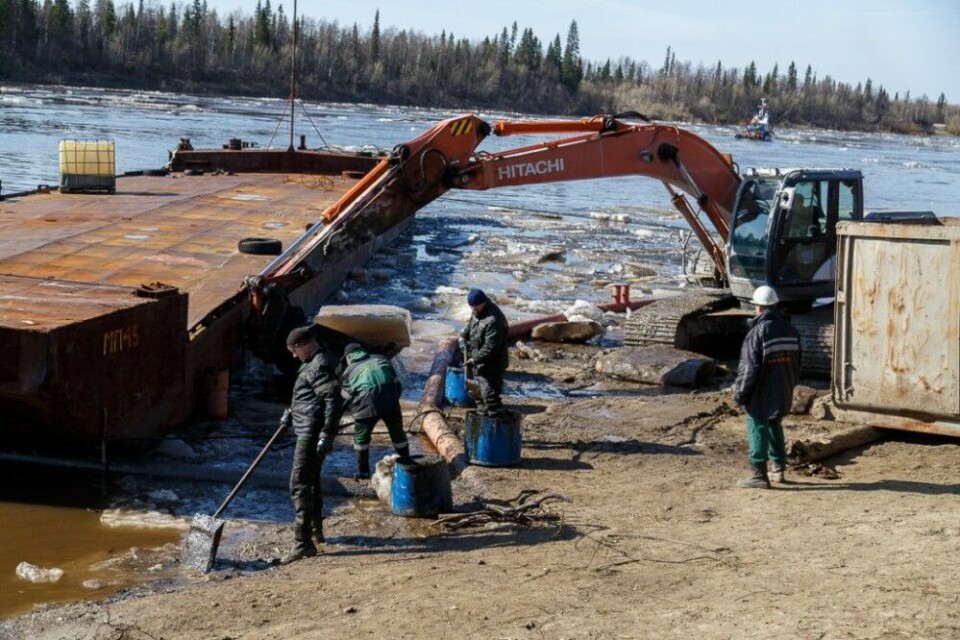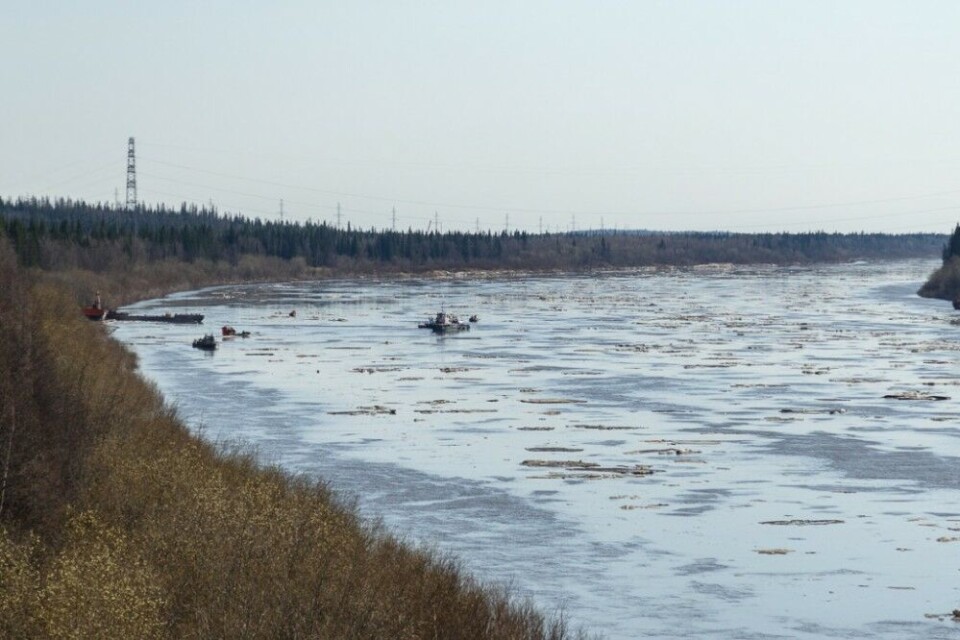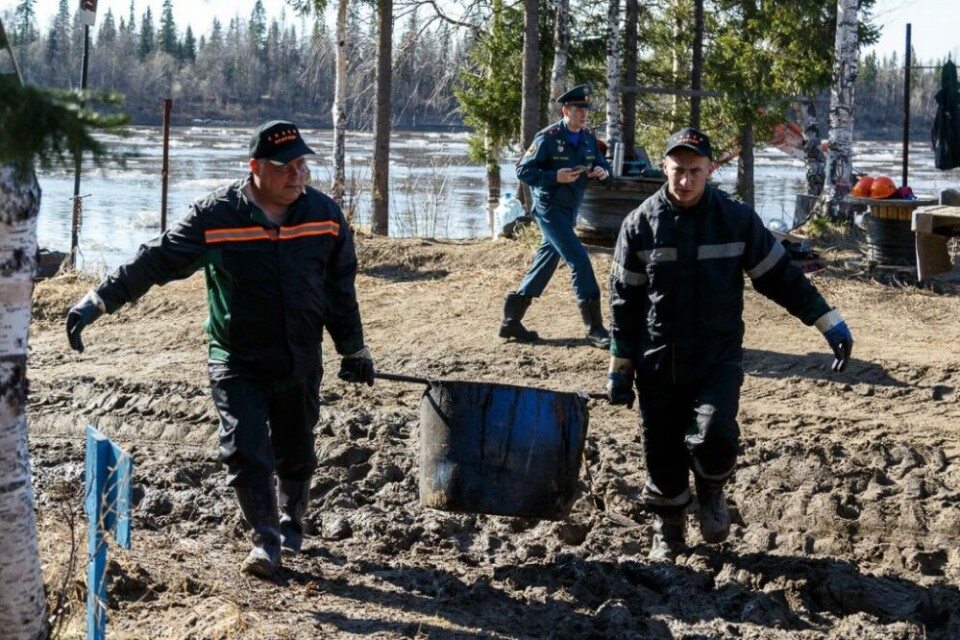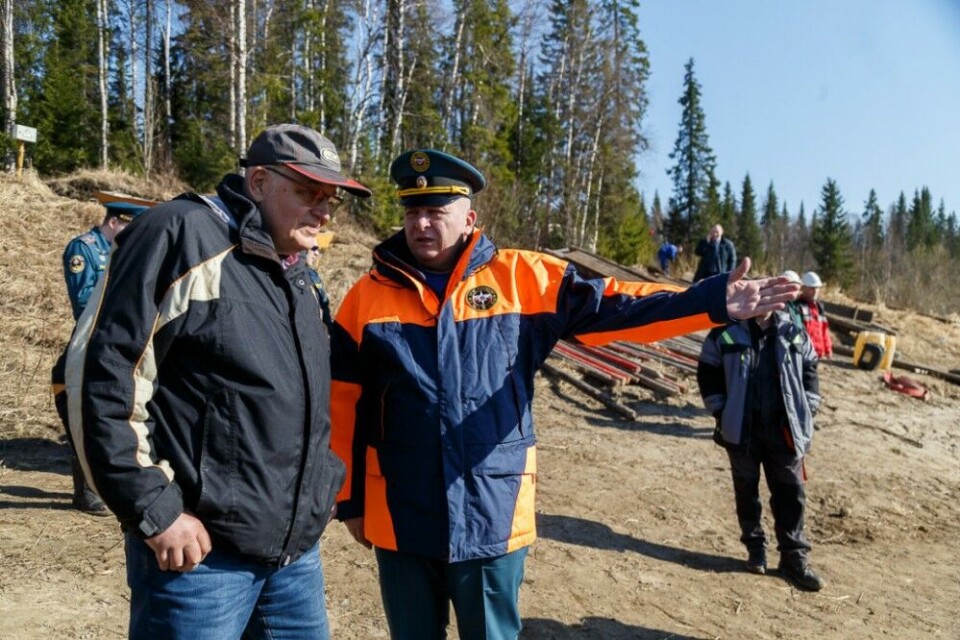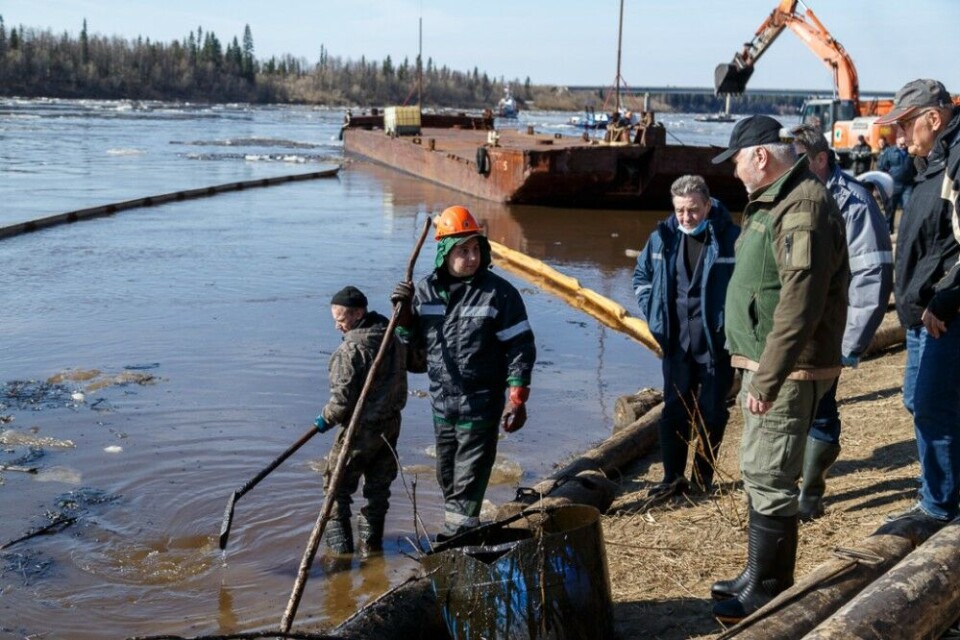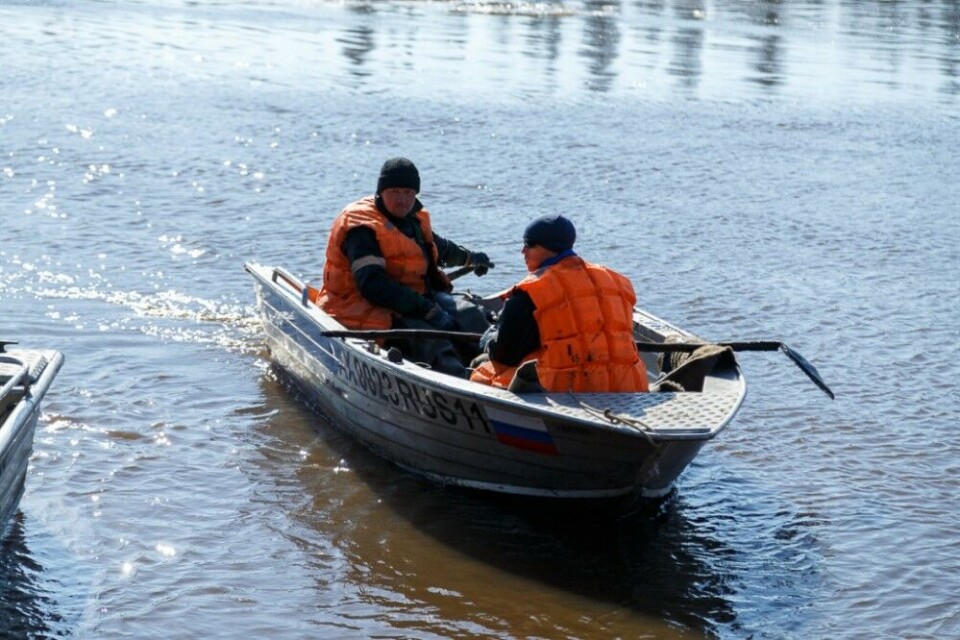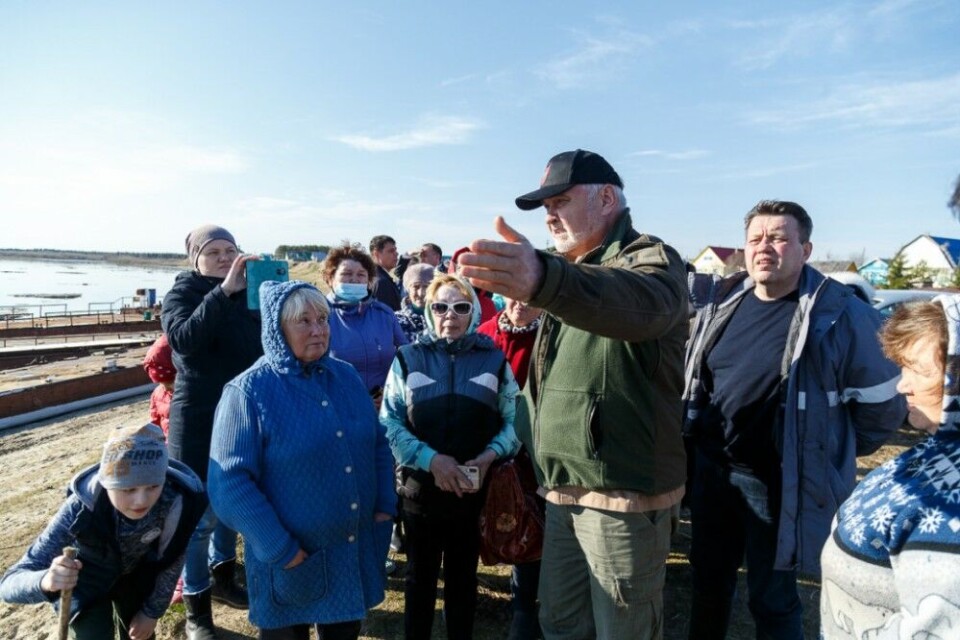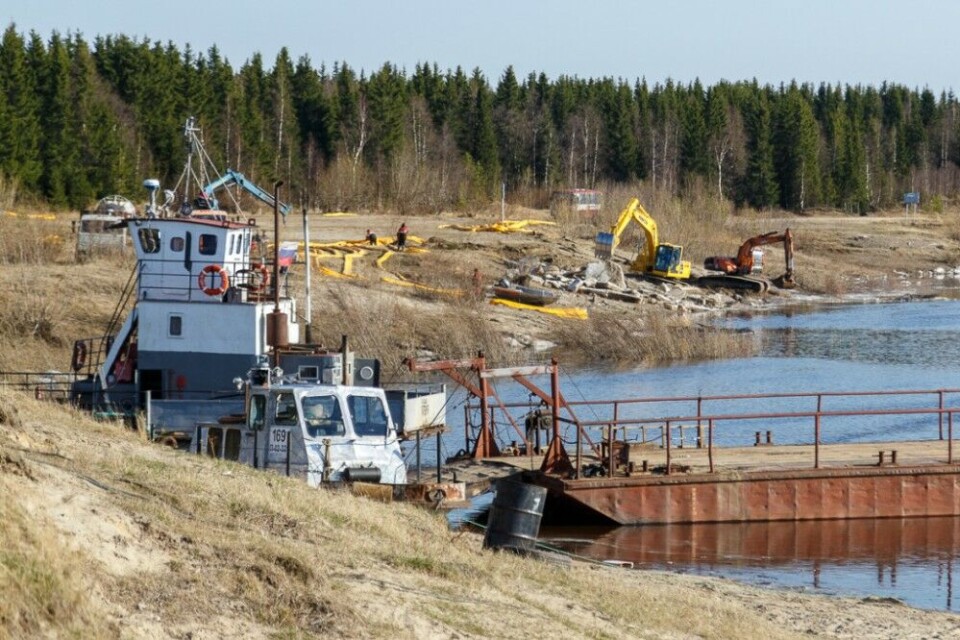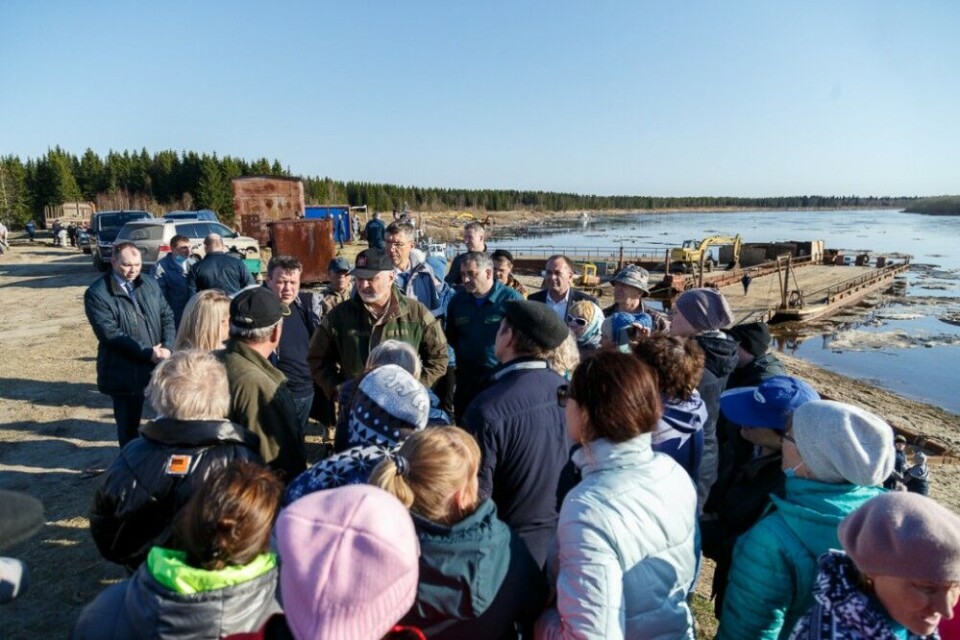Komi authorities declare emergency after oil spill
A broken pipeline has caused oil to leak out to the northern Russian Kolva river in the border area between Nenets Autonomous Okrug and the Komi Republic.
An emergency is declared for the territory of Usinsk municipal district, the government of the Komi Republic informs.
Clean-up work on the river banks is in full swing, lead by the regional department of Russia’s Ministry of Emergency Situations. The spill was first discovered when an oily film on the water was seen earlier this week, several tens of kilometers downstream from the pipeline.
“The work to eliminate the consequences of the oil spill will be extremely difficult because of the ice drift in the river,” said Head of the Komi Republic Vladimir Uiba. Oil booms are of little help on waters with drifting ice.
The Barents Observer’s regional media partner in the region, 7x7 Journal, quoted eco-activists observing the oil spill spreading 45 kilometers downstream from the village of Kolva. The activists could see workers from the LUKOIL-Komi company preparing to put sorbent on the river to contain the spill. Attempts to put booms on the river failed due to all the ice floes floating along.
A video posted on the Vkontakte social network shows ice floes contaminated by heavy oil.
The pipeline with the leak connects the Oshskoye oil field operated by LUKOIL in the Nenets Autonomous Okrug with a nearby storage facility at the Kharyaga field, from where the oil is further pumped into the state-operated Transneft pipeline systems from northwestern Russia.
A blogger from the Nenets AO, who traveled together with local journalists and officials with helicopter over the area, says the leakage that happened at the pipeline’s booster pumping station No. 5 now is sealed and repaired. In his blog on Vkontakte social media, he points to preliminary estimates indicating that some three tons of oil have leaked out to the river, while another four tons remain on the ground.
The contaminated soil will be removed, the officials he had been talking to said.
The Kolva river flows into the Usa river, which again flows into the larger Pechora river traversing through the Nenets AO before flowing out to the Barents Sea coast north of Naryan-Mar.
A criminal investigation over the oil spill has started.
LUKOIL-KOMI said in a press release that 150 people are working on the clean-up of the spill and that booms are in use at several places in the river. The company, however, does not mention what Komi officials are claiming, that using the booms is very difficult due to ice floes in the river.
Meanwhile, in Moscow this week, and without mentioning the ecological emergency in the northern republic of Komi, the oil company’s president Vagit Alekperov signed a cooperation agreement with Russia’s minister of emergency situations Yevgeny Zinichev. The deal stipulates how the parties will work together on protecting the population from natural and man-made emergencies.
The most contaminated parts of the Kolva river are near the town of Usinsk, often referred to as the oil capital of the Komi Republic. The town made worldwide headlines in 1994 as more than 60,000 tonnes of oil leaked out from a broken pipeline. The spill was one of the most serious environmental disasters in Russia in the 1990s.
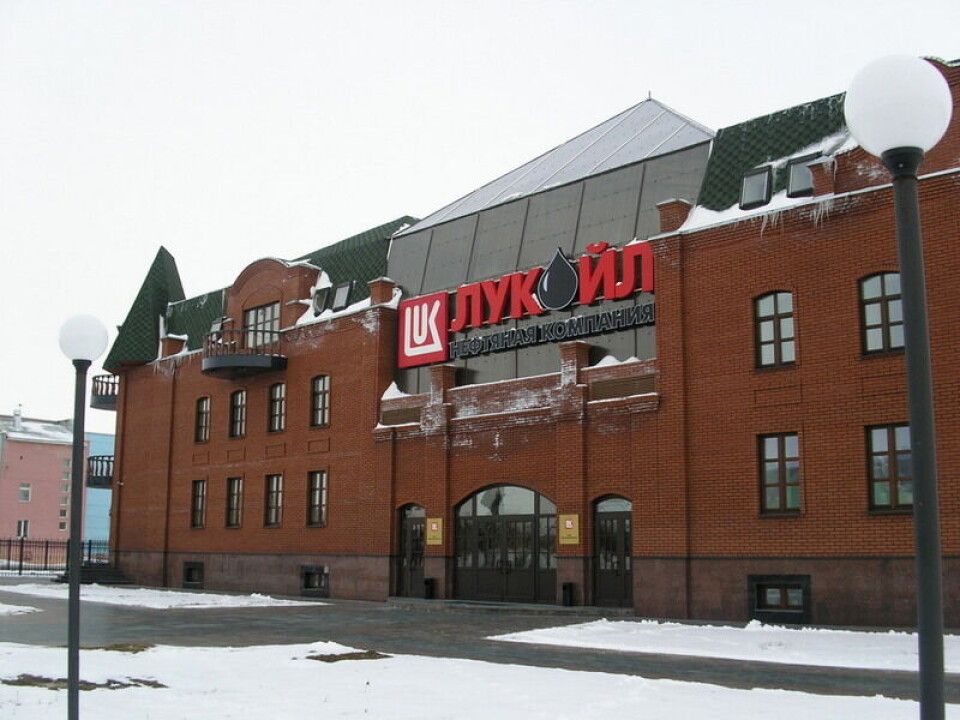
The oil spill this spring comes only seven months after a major oil spill polluted the same Kolva river.
Ivan Ivanov with the environmental NGO Save Pechora Committee then strongly criticized LUKOIL for not dealing promptly with the spill.
“Will LUKOIL be able to do something about the oil that has formed an emulsion with water? No, nothing and never, ” he said. “And will LUKOIL be able to do something about the bottom sediment? Theoretically, it will, but most likely it will not do anything,” Ivanov then stated.


